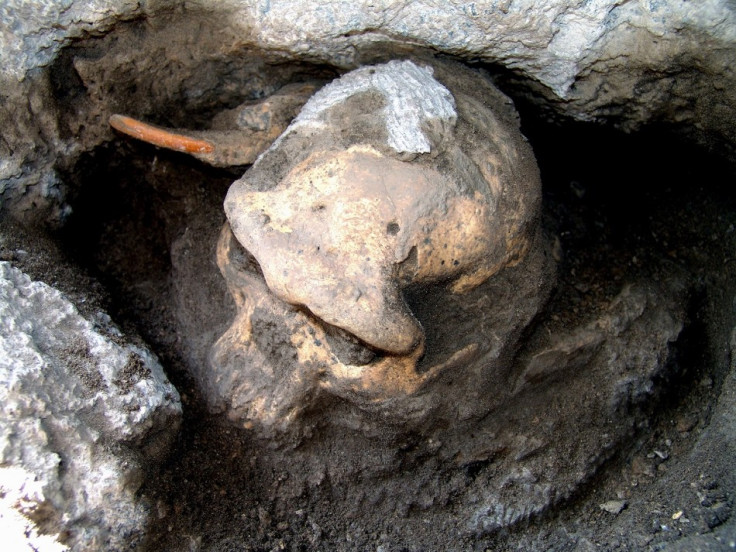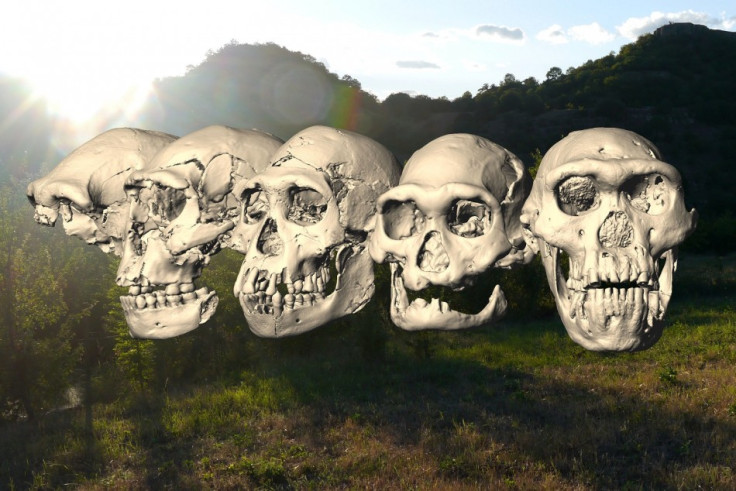1.8-Million-Year-Old Skull Discovered in Georgia 'Re-Writes Human Evolution' [PHOTOS]

A perfectly preserved 1.8-million-year-old skull discovered in Georgia has the potential to re-write modern thinking of human evolution.
The skull of an early species of man found in Dmanisis, near the Armenian border, suggests there was much less diversity among human species around two million years ago than previously believed.
Paleoanthropologists from the University of Zurich found the perfectly preserved skull combined features previously unknown to science.
The skull has the largest face, most massively built jaw and teeth and smallest brain within the Dmanisi group, which currently consists of five skulls.

Its condition means scientists can find answers to the evolutionary beginnings of the genus Homo from around two million years ago.
Previously, scientists have been unable to establish if there was a single species of Homo that could cope with a variety of ecosystems, of if there were several specialised species.
Because most fossils are fragments from multiple points in space and time, answering questions about human evolution has always been problematic.

Another issue is that researchers often assume fossils they find are representative of a species, despite this not being statistically likely. As a result, five species of early Homo have been identified, including Homo habilis, Homo rudolfensis and Homo erectus.
The Zurich team believes the Dmanisi skull has provided a solution as it unites features previously thought to belong to different species.
Anthropologist Marcia Ponce de León said: "Had the braincase and the face of the Dmanisi sample been found as separate fossils, they very probably would have been attributed to two different species. It is also decisive that we have five well-preserved individuals in Dmanisi whom we know to have lived in the same place and at the same time."

She said that having five skulls allows the team to compare variation within the Dmanisi group which provides two conclusions: "Firstly, the Dmanisi individuals all belong to a population of a single early Homo species. Secondly, the five Dmanisi individuals are conspicuously different from each other, but not more different than any five modern human individuals, or five chimpanzee individuals from a given population."
The researchers say scientists must now re-think their perspective on human evolution. They say African fossils from 1.8m years ago probably represent one species best described as Homo erectus, which then expanded through Eurasia and as far as China and Java.

Co-author Christoph Zollikofer said: "We know that these individuals came from the same location and the same geological time, so they could, in principle, represent a single population of a single species.
"Since we see a similar pattern and range of variation in the African fossil record ... it is sensible to assume that there was a single Homo species at that time in Africa. And since the Dmanisi hominids are so similar to the African ones, we further assume that they both represent the same species."
© Copyright IBTimes 2025. All rights reserved.






















